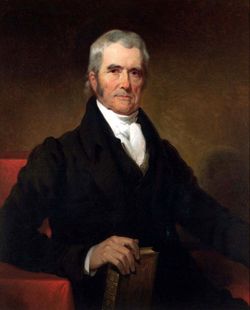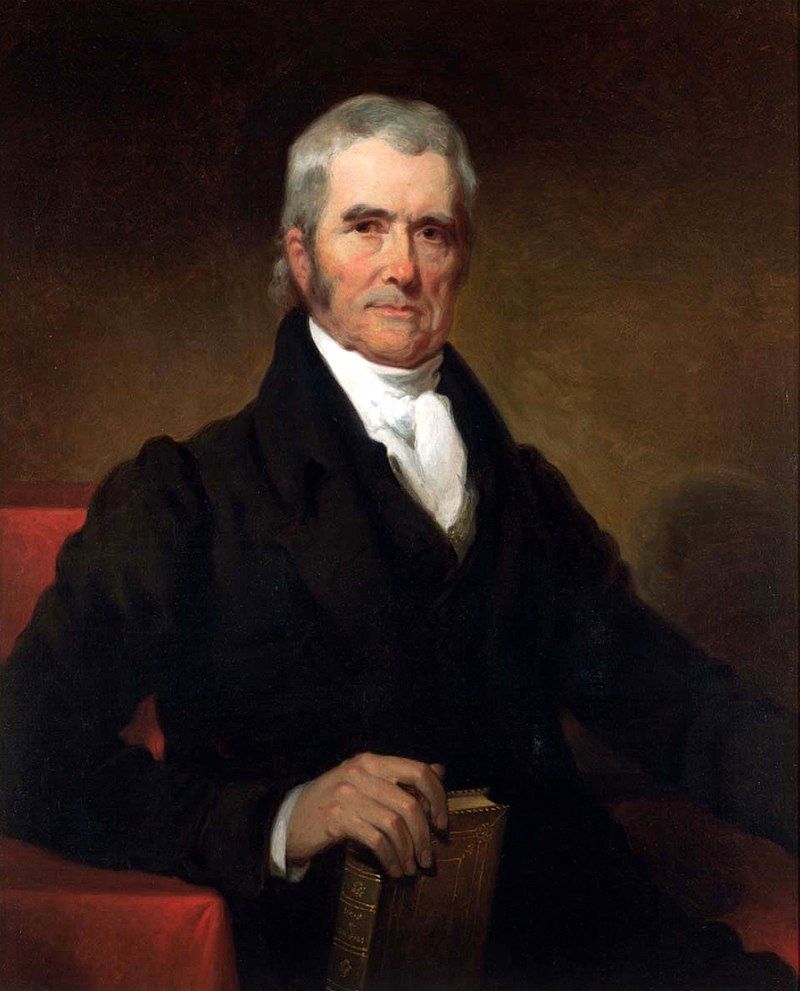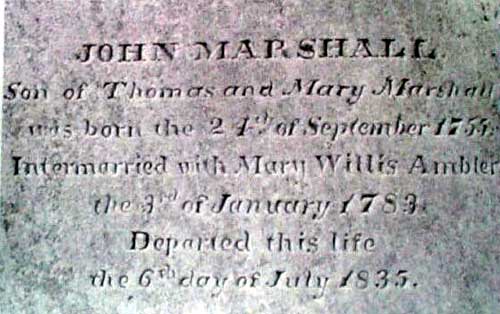US Congressman, Secretary of State, and Supreme Court Justice. A member of the Federalist Party, he served in the US House of Representatives for Virginia's 13th congressional district from March 1799 until June 1800. The oldest of 15 children, he lived in a two-room log cabin in his early years and did not receive a formal education. When the American Revolution broke out in 1775, he served as a captain in the Continental Army under General George Washington. After being furloughed in 1780 he attended the College of William and Mary and studied law, and was admitted to the bar and established a law practice. In 1782 he entered politics, and was elected to the Virginia House of Delegates. Following his election to Congress, President John Adams nominated him as the US Secretary of State, serving briefly from June 1800 until March 1801, and during this time he helped to bring an end to the Quasi-War, an undeclared naval war between the US and France from 1798 to 1800, through the signing of the Convention of 1800. In January 1801 he was nominated by Adams to become the Chief Justice of the US Supreme Court, replacing Oliver Ellsworth who resigned because of poor health. His nomination was approved by the US Senate and he took office on February 4, 1801 and served until his death. His Court's first case, and probably what he is best remembered for, was the 1803 case of Marbury v. Madison, in which he upheld the principle of judicial review, whereby courts could strike down federal and state laws if they conflicted with the Constitution. This decision helped implement the principle of separation of powers and affirm the position of the US Supreme Court as an independent and co-equal branch of government. He died at the age of 79, following a surgical procedure and was succeeded as Chief Justice by Roger B. Taney.
US Congressman, Secretary of State, and Supreme Court Justice. A member of the Federalist Party, he served in the US House of Representatives for Virginia's 13th congressional district from March 1799 until June 1800. The oldest of 15 children, he lived in a two-room log cabin in his early years and did not receive a formal education. When the American Revolution broke out in 1775, he served as a captain in the Continental Army under General George Washington. After being furloughed in 1780 he attended the College of William and Mary and studied law, and was admitted to the bar and established a law practice. In 1782 he entered politics, and was elected to the Virginia House of Delegates. Following his election to Congress, President John Adams nominated him as the US Secretary of State, serving briefly from June 1800 until March 1801, and during this time he helped to bring an end to the Quasi-War, an undeclared naval war between the US and France from 1798 to 1800, through the signing of the Convention of 1800. In January 1801 he was nominated by Adams to become the Chief Justice of the US Supreme Court, replacing Oliver Ellsworth who resigned because of poor health. His nomination was approved by the US Senate and he took office on February 4, 1801 and served until his death. His Court's first case, and probably what he is best remembered for, was the 1803 case of Marbury v. Madison, in which he upheld the principle of judicial review, whereby courts could strike down federal and state laws if they conflicted with the Constitution. This decision helped implement the principle of separation of powers and affirm the position of the US Supreme Court as an independent and co-equal branch of government. He died at the age of 79, following a surgical procedure and was succeeded as Chief Justice by Roger B. Taney.
Bio by: William Bjornstad
Family Members
-
![]()
Elizabeth Marshall Colston
1756–1843
-
Mary Ann Marshall Marshall
1757–1824
-
![]()
Capt Thomas Marshall Jr
1761–1817
-
![]()
James Markham Marshall
1764–1848
-
![]()
William Marshall
1767–1816
-
Charles Fleming Marshall
1767–1805
-
Lucy Marshall Ambler
1768–1795
-
Alexander Keith Marshall
1770–1825
-
![]()
Dr Louis Marshall
1772–1866
-
Charlotte Ashmore Marshall Duke
1777–1817
Advertisement
See more Marshall memorials in:
Records on Ancestry
Sponsored by Ancestry
Advertisement























